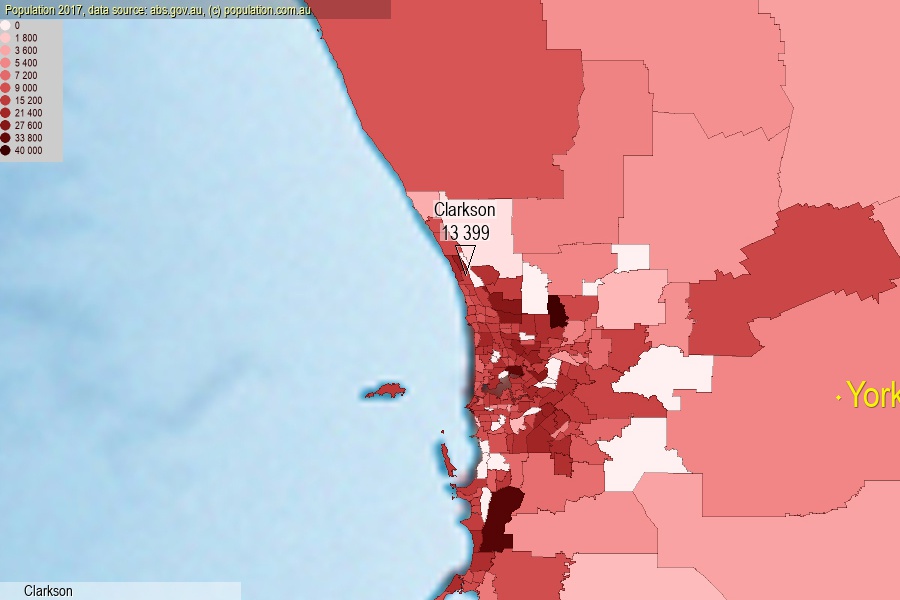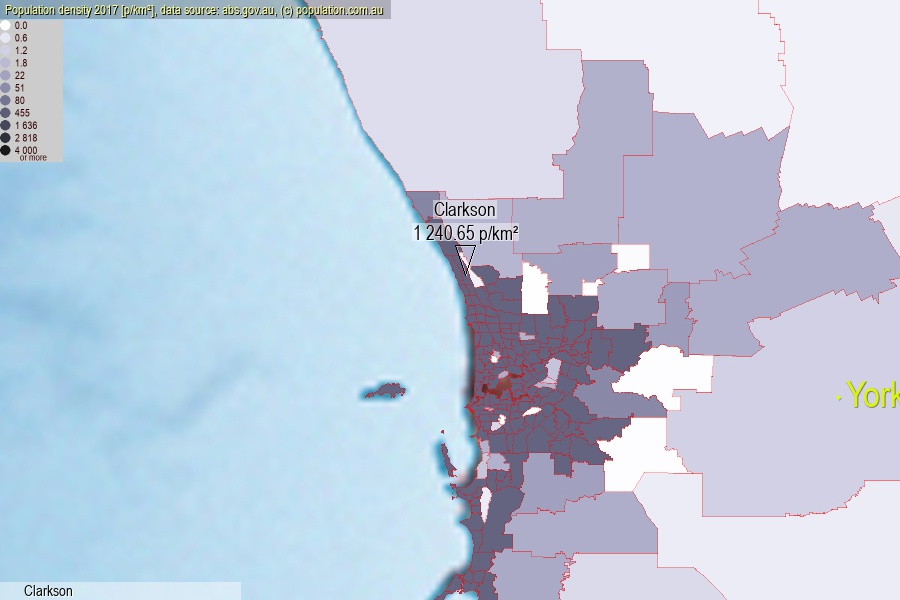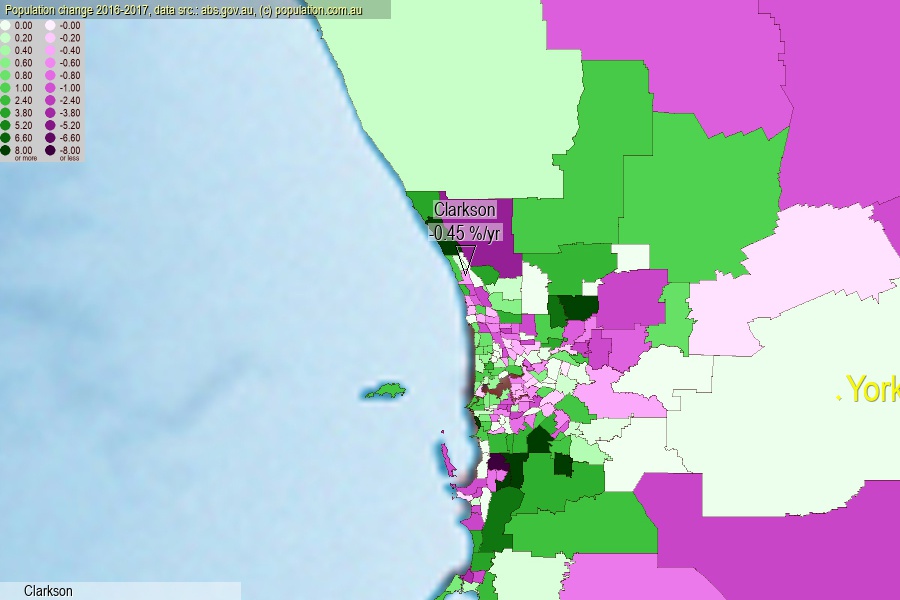 population.com.au
population.com.auLast official estimated population of Clarkson (as Statistical Area Level 2) was 13 399 people (on 2017-06-30)[2]. This was 0.05% of total Australian population and 0.517% of WA population. Area of Clarkson is 10.80 km², in this year population density was 1 240.65 p/km² . If population growth rate would be same as in period 2016-2017 (-0.45%/yr), Clarkson population in 2025 would be 12 929. [0]



Click to enlarge. Clarkson is located in the center of the images.
Population [people], population density [p./km²] and population change [%/year] [2]
View borders » (new window) [4]
[1991-1992] +58.59 %/Yr.
[1992-1993] +67.11 %/Yr.
[1993-1994] +48.01 %/Yr.
[1994-1995] +17.68 %/Yr.
[1995-1996] +9.80 %/Yr.
[1996-1997] +5.91 %/Yr.
[1997-1998] +5.45 %/Yr.
[1998-1999] +1.79 %/Yr.
[1999-2000] +3.23 %/Yr.
[2000-2001] +4.12 %/Yr.
[2001-2002] +1.10 %/Yr.
[2002-2003] +0.95 %/Yr.
[2003-2004] +3.45 %/Yr.
[2004-2005] +5.53 %/Yr.
[2005-2006] +6.52 %/Yr.
[2006-2007] +17.21 %/Yr.
[2007-2008] +14.06 %/Yr.
[2008-2009] +12.86 %/Yr.
[2009-2010] +5.66 %/Yr.
[2010-2011] +5.40 %/Yr.
[2011-2012] +4.44 %/Yr.
[2012-2013] +2.80 %/Yr.
[2013-2014] +1.82 %/Yr.
[2014-2015] +0.19 %/Yr.
[2015-2016] -0.01 %/Yr.
[2016-2017] -0.45 %/Yr.
[0] Calculated with linear interpolation from officially estimated population
[1] Read more about SA2 and Australian Statistical Geography Standard (ASGS) on abs.gov.au
[2] Population data from Australian Bureau of Statistics (Population and density: 2017; change: 2016-2017)
[3] Digital Boundaries: Australian Statistical Geography Standard (ASGS) 2016.
[4] Border coordinates are simplifyed using Ramer-Douglas-Peucker algorithm.